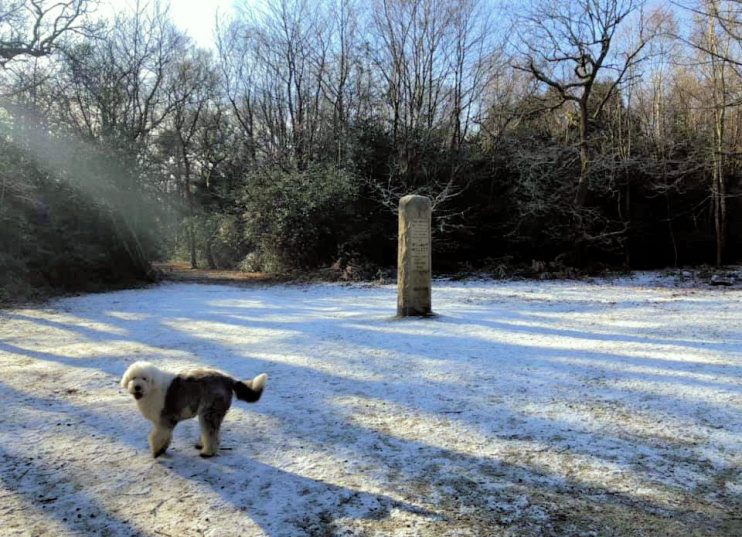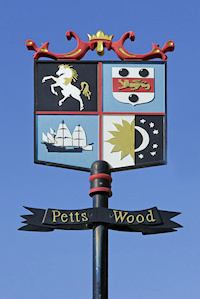Petts Wood
Petts Wood, Bromley
The acme of Kentish suburbia, situated midway between Chislehurst and Orpington, and previously divided between those two parishes

The wood is believed to have been planted in the last quarter of the 16th century by the Pett family, who were leading shipwrights for 200 years and are mentioned in Pepys’ diaries. Not until 1872 was the first house said to have been built here, and named Ladywood.
William Willett came up with his idea for daylight saving time while riding through Petts Wood just after dawn one morning in the early 1900s.
Basil Scruby, an entrepreneur from Harlow in Essex, had already built more affordably at Newbury Park and elsewhere when he turned his attention to Petts Wood in 1927, securing an option on 400 acres of woodland and strawberry fields and proceeding to buy it in sections. In the same year, the National Trust acquired most of what was left of the wood and erected a granite obelisk and sundial (showing British Summer Time) in William Willett’s honour. The Willett Memorial is shown in the photo at the top of this article and its location is indicated by a big pink pin near the top of the map below.
Also in 1927, Colonel Francis Edlmann acquired a neighbouring swathe of woodland and added it to his Hawkwood estate, thus protecting it too from development. Robert and Francesca Hall bought the Hawkwood estate after Edlmann’s death, and later presented it to the National Trust.
Basil Scruby appointed the architect Leonard Culliford to lay out roads that emphasized the natural curves of the landscape, rather than simply cutting across it. Scruby also paid the Southern Railway Company £6,000 to open a station in 1928, and provided the site for the passenger building and a goods yard. Shops, the Daylight Inn hotel and the Embassy cinema were built in the vicinity of the station from the early 1930s.

Scruby leased groups of plots to numerous builders, including his Harlow friends Walter Reed and George Hoad. The various subcontractors soon built up the eastern side of Petts Wood in a variety of grandiose styles, with mock-Tudor predominating.
St Francis’s church was built on Willett Way in 1935. From around this time, Basil Scruby began to sell off the land west of the railway line but as a result of his financial difficulties he was unable to exert control over the quality of building. Much of this area was developed by Morrell’s and New Ideal Homesteads, both major players in the suburbanisation of rural south London.
On the edge of Scruby’s land, other developers added some modernist houses and chalets, a few in the voguish ‘suntrap’ style. Congregational (later United Reformed), Methodist and Roman Catholic churches were built in the 1950s and 1960s.
The Embassy cinema closed in 1973 and was replaced by a Safeway supermarket (now a Morrisons) in 1982, whereupon five local shops closed within months, but generic factors also played their part in the subsequent decline of the centre’s village character.
In 1940 General Charles de Gaulle and his wife rented 41 Birchwood Road after the fall of France but they (perhaps overcautiously) judged Petts Wood to be at risk of bombing, so the family moved to rural Shropshire while the general stayed in a Mayfair hotel before moving to Frognal.
The dour entertainer Jack Dee was born in Petts Wood in 1964.
